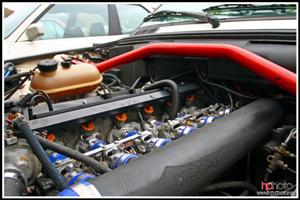Dumb asses...Just frinking measure it...
Find a lift, put the car up into the air 8 feet or so.
Get some light ribon from the fabric store(wide enough not to slip into the cracks of the tread)
Wrap the thread around a front wheel a few times
Add a little bit of weight to the free end of the ribon. Keep adding untill the the wheel will just start to move, then remove a tiny bit of weight(this part will make up for friction of the wheel bearings)
Then add 10 pounds of weight to the ribon, and measure the acceleration of the wheel as it rotates.
(OR SOMETHING LIKE THE ABOVE) - anyways, that how it would be done in the real world by an engineer(most likely on a low friction bearings, and a computer measuring the accelerations(alpha) of the wheel...
Or sorry about the dumbass comment...(just a joke)
Find a lift, put the car up into the air 8 feet or so.
Get some light ribon from the fabric store(wide enough not to slip into the cracks of the tread)
Wrap the thread around a front wheel a few times
Add a little bit of weight to the free end of the ribon. Keep adding untill the the wheel will just start to move, then remove a tiny bit of weight(this part will make up for friction of the wheel bearings)
Then add 10 pounds of weight to the ribon, and measure the acceleration of the wheel as it rotates.
(OR SOMETHING LIKE THE ABOVE) - anyways, that how it would be done in the real world by an engineer(most likely on a low friction bearings, and a computer measuring the accelerations(alpha) of the wheel...
Or sorry about the dumbass comment...(just a joke)



Comment